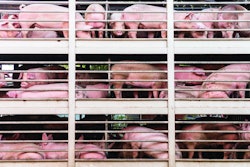
7 things nutritionists can do to mitigate the spread of African swine fever
Lacking an effective vaccine for African swine fever (ASF), the only way to battle the ever-spreading virus is through prevention, and biosecurity is the key. But, nutrition has a role to play, which is not insignificant, based on research and previous experiences.
It must be reminded here that ASF is not a disease that is caused by feed or any feed ingredients, and as such it is not a nutrition problem. But, as feed and raw materials can become an effective vector for the virus and cause disease (regardless how likely that can be), the magnitude of possible destruction has alerted nutritionists to lend an assisting hand. So, without being exhaustive nor sufficient, by any means, the following measures can be used to avoid nutrition being blamed for ASF.
How nutrition can aid in mitigating ASF spread
- Avoiding purchases from infected regions as much as possible – although some ingredients cannot be procured elsewhere – is a sure way not to bring the disease into a non-infected country/region and farm. This requires buying from sources that are aware of the problem and do everything to ensure their raw materials and feeds are ASF-free.
- Extending storage time (quarantine) is a measure recommended in some areas, but it is the most unrealistic one. During cold weather, the storage time can be as low as 20 days for some materials, but in warmer conditions the quarantine needs to exceed 400 days. This means extra warehouses, logistics, capital, credit, and few ingredients have sufficiently long expiration periods to stay in storage for a year.
- Adding 0.3% liquid formaldehyde has been shown by Kansas State University research that it can kill the virus. Formaldehyde is a positive carcinogen and difficult to handle. It is not allowed in all countries to be used in animal feeds. So, this is a rather extreme measure for places where such usage is legal.
- Adding 1% of certain medium- or short-chain fatty acids has also been shown to mitigate the presence of virus in animal feed and ingredients. In my opinion, this is based on biology as sow’s milk is rich in such antiviral fatty acids – but they did not prevent porcine epidemic diarrhea (PED) problems – although this is a different story. At the moment, this is a brand-specific approach that requires a considerable expense as such products are nothing but inexpensive.
- Thermal processing at temperatures ranging from 75 to 90 degrees Celsius can also deactivate the virus. But, it will also destroy many other organic compounds such as vitamins and proteins, rendering thus the feed less nutritive and ineffective. Again, such an extreme measure can work only as a last resort and always following over-formulation for certain heat-sensitive nutrients.
- Organic acids, such as formic acid, which has a weak connection to formaldehyde, can also exhibit weak antiviral properties. Not all organic acids are effective, and those that are effective need to be added at concentrations that may alter feed palatability, or cause interactions with other nutrients or other organic acids added as anti-bacterial agents.
- Phytogenic compounds are a natural resource as plants also battle against viruses. Work conducted by Dr. Eckel Animal Nutrition, a German company that invited me to present a relevant lecture and gave me permission to use that material for my articles, has clearly demonstrated that certain phytogenic compounds possess antiviral activities against ASF. Again, not all phytogenic compounds are effective against viruses; it is the same case as with all other additives discussed.
It appears the use of certain additives in complete feeds and premixed concentrates – even perhaps a combination of two different products – may be the only practical solution to mitigate the danger of ASF transmission through nutrition. There are no guarantees this approach can totally prevent the problem. Nevertheless, given the alternative (complete repopulation) it definitely deserves attention.
Future solutions
To my knowledge, many nutrition suppliers, especially those with great experience in phytogenic compounds and other additives against bacteria, are working feverously (pun intended) to find products that can mitigate the issue of ASF in pig feeds. Until a working vaccine is found, prevention is the only measure against ASF, and even that in many cases has failed to contain the 2007 Georgia strain that has already decimated at least 25% of total global pig population with no real ending present.
 Phytogenic compounds possess antiviral properties. (Krzysztof Slusarczyk | Dreamstime.com)
Phytogenic compounds possess antiviral properties. (Krzysztof Slusarczyk | Dreamstime.com)
















